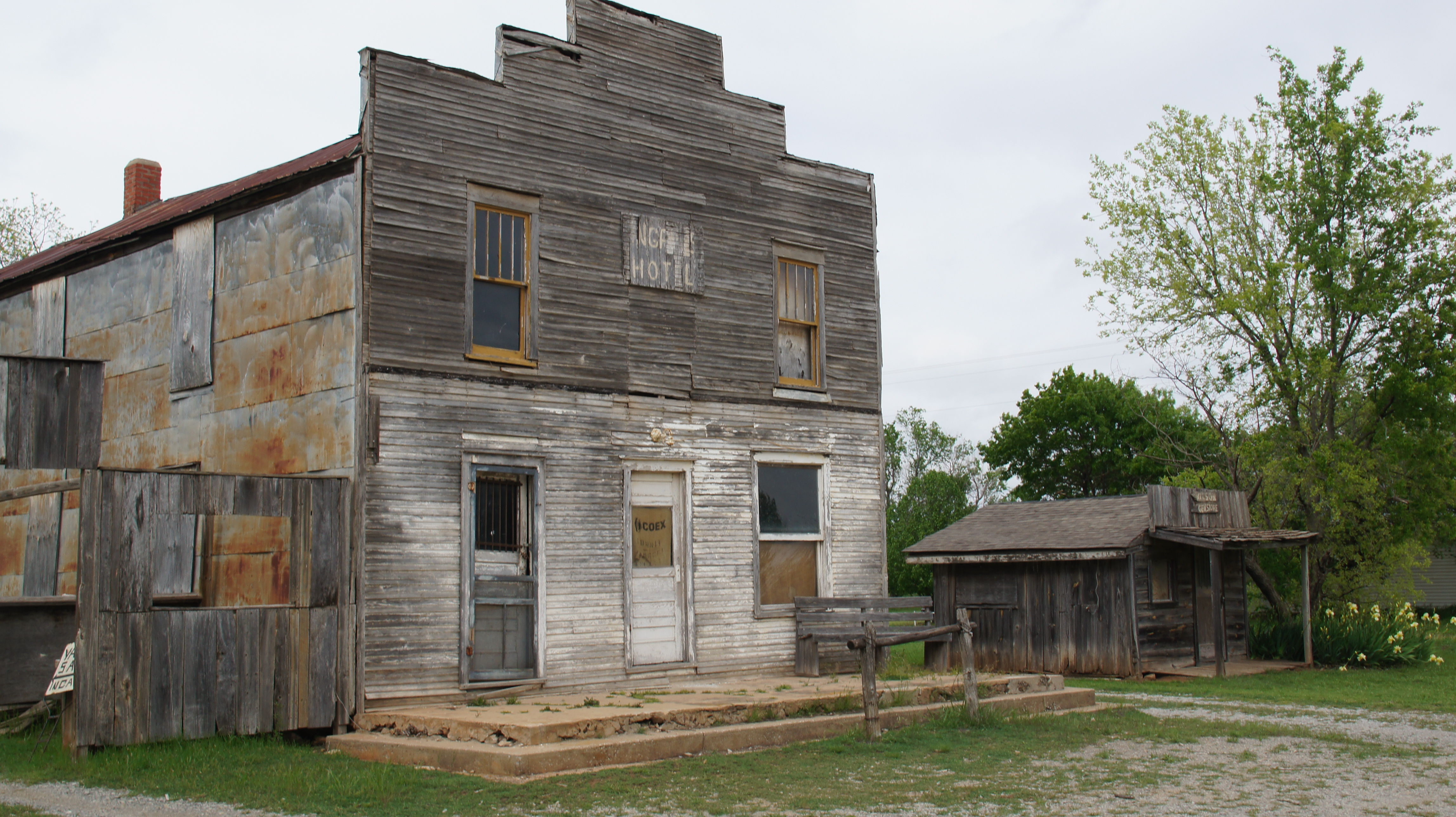The U.S. state of Oklahoma has an estimated two thousand ghost towns. These towns began for a number of reasons, often as liquor towns, boomtowns, or mining towns, with some pre-dating statehood. The population and activity later declined in these locations due to the exhaustion of natural resources, manmade or natural disasters, urbanization, the creation of a water source, or after being bypassed by highways and interstates.
These places vary in their current states with some having completely disappeared while others still have small communities. A small number have also gained notability for other reasons, such as being part of the Tar Creek Superfund Site, for existing in an unusual location, or for crimes. The earliest known ghost town in the state was said to have been one by 1839 while the latest were evacuated in 2010.
History
Oklahoma is a U.S. state in the South Central region of the United States. It has the nation's twenty-eighth largest population and ranks twentieth in terms of land area in the United States. There are an estimated two thousand ghost towns within the state. Many of these sites emerged quickly for various reasons. Prior to statehood, these were often "liquor towns" (or "whiskey towns"), located in Oklahoma Territory which served alcohol to adjacent residents of Indian Territory, a then-dry territory. Similarly, towns in the Oklahoma panhandle (then called "No Man's Land") were a place for lawlessness where alcohol was also served to residents of the surrounding towns in Kansas and Texas where it was otherwise prohibited. In later years, after Oklahoma was admitted to the union, several boomtowns were established after the discovery of natural resources, such as oil or petroleum jelly. Several mining towns also took form when lead, zinc, gold, or coal was discovered.
Over time, these towns ceased to exist for a variety of reasons. Some towns diminished as the natural resources were exhausted and the population moved to other locations. The residents in other places frequently relocated to be closer to newly-laid railroad tracks, a post office, a water source, or larger cities. Some towns were abandoned when the townspeople were displaced after manmade and natural disasters such as tornadoes, fires (both wild and arson), floods, sinkholes, or being declared a superfund site. A number of places were also demolished to create artificial lakes and dams. In later years, many towns faded away when they were bypassed by the U.S. Numbered Highway System, and later the Interstate Highway System.
Ghost towns in Oklahoma have been extensively researched and documented in two books, both released by the University of Oklahoma Press: Ghost Towns of Oklahoma (1978) by John W. Morris and Here Today: Oklahoma's Ghost Towns, Vanishing Towns, and Towns Persisting Against the Odds (2024) by Jeffrey B. Schmidt. The definition of "ghost town" varies from author to author. Morris, for example, classified them as such if they met one of three criteria: places that no longer exist and have no physical evidence remaining, places in which structures remain but have been abandoned and are unused, or places where the population has decreased eighty percent or more from its peak.
Schmidt, meanwhile, had a lower threshold for population decline and placed listed towns into one of five specific categories—Barren Site, Neglected Site, Abandoned Site, Semi-Abandoned Site, or Historic Community—which are used as a methodology to describe the locations' then-statuses. While still covering historic communities in his book, Schmidt did not consider them to meet the criteria of a ghost town. Further definitions of what a ghost town is have been shaped by various other authors whose scope often extends outside of Oklahoma itself.
Oklahoma's ghost towns are in various states of existence. The locations of Autwine and Zincville, among others, have very little to no physical evidence remaining, such as ruins or foundations, and have been reverted for agricultural use. Other locations are similar to those of Gotebo and Warwick and may still have abandoned buildings or even a community that contains businesses, schools, or a local government, and in which citizens reside.
A few ghost towns have also become particularly notable in their own right for other reasons. For example, Picher has been referred to as the most toxic town in America, while residents in Texola were classified as both Oklahomans and Texans because the town was surveyed eight different times, often with different results about whether the area actually existed in Oklahoma or Texas. Kenton is known for being the only place in Oklahoma to observe Mountain Time and Shamrock rose to notoriety after it was discovered that local law enforcement were issuing illegal traffic tickets because they were not actually police officers to begin with.
List of ghost towns
See also
- List of ghost towns by country
Notes
References
Bibliography
Further reading
- Savage, Cynthia; Hedglen, Thomas (2009). "The Encyclopedia of Oklahoma History and Culture". In Everett, Dianna; O'Dell, Larry; Wilson, Linda D.; May, Jon D. (eds.). The Encyclopedia of Oklahoma History and Culture. Oklahoma Historical Society.
- Shirk, George H. (March 15, 1987). Oklahoma Place Names. Norman, Oklahoma: University of Oklahoma Press. ISBN 9780806120287.
External links
- Abandoned Oklahoma from the Abandoned Atlas Foundation
- Oklahoma Ghost Towns on Travel Oklahoma



